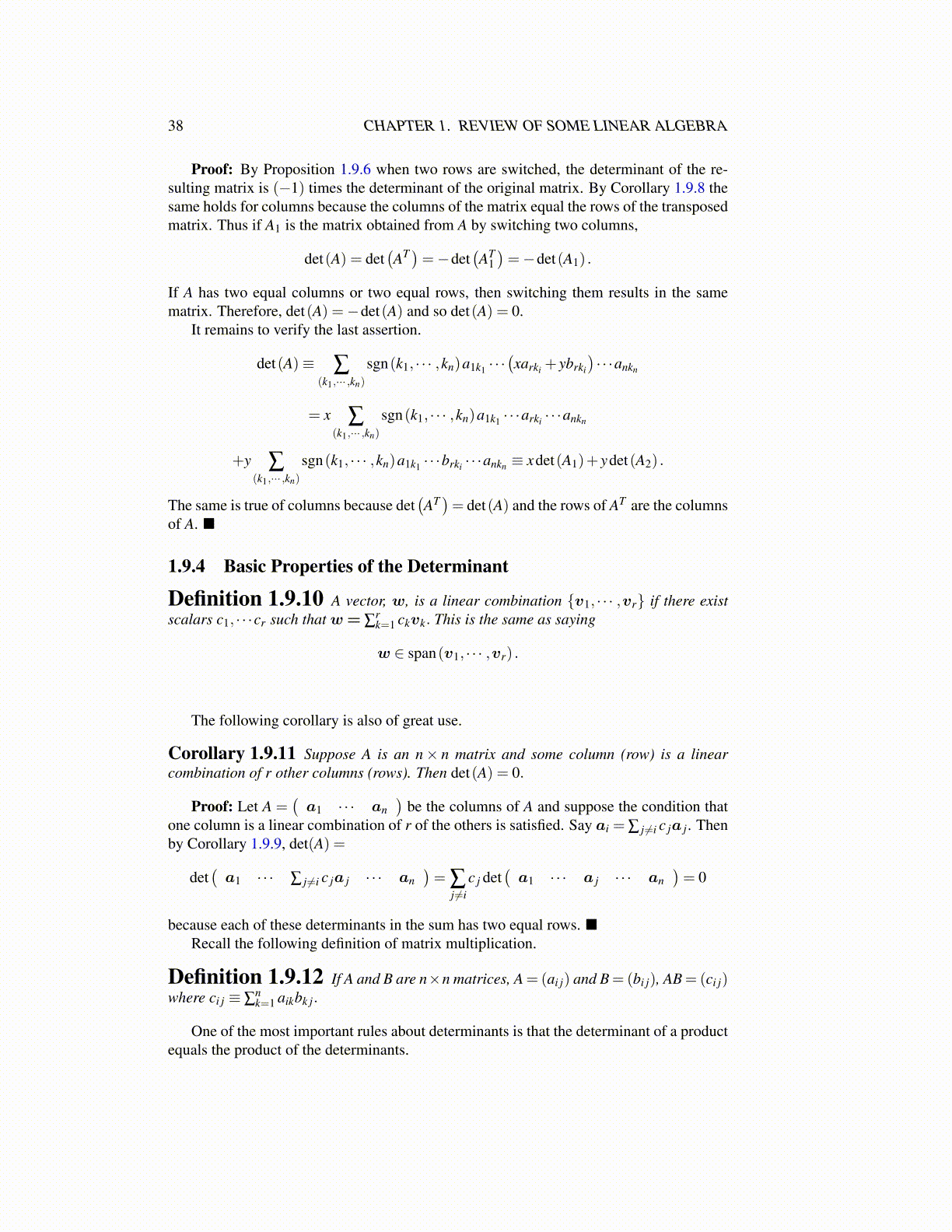
38 CHAPTER 1. REVIEW OF SOME LINEAR ALGEBRA
Proof: By Proposition 1.9.6 when two rows are switched, the determinant of the re-sulting matrix is (−1) times the determinant of the original matrix. By Corollary 1.9.8 thesame holds for columns because the columns of the matrix equal the rows of the transposedmatrix. Thus if A1 is the matrix obtained from A by switching two columns,
det(A) = det(AT )=−det
(AT
1)=−det(A1) .
If A has two equal columns or two equal rows, then switching them results in the samematrix. Therefore, det(A) =−det(A) and so det(A) = 0.
It remains to verify the last assertion.
det(A)≡ ∑(k1,··· ,kn)
sgn(k1, · · · ,kn)a1k1 · · ·(xarki + ybrki
)· · ·ankn
= x ∑(k1,··· ,kn)
sgn(k1, · · · ,kn)a1k1 · · ·arki · · ·ankn
+y ∑(k1,··· ,kn)
sgn(k1, · · · ,kn)a1k1 · · ·brki · · ·ankn ≡ xdet(A1)+ ydet(A2) .
The same is true of columns because det(AT)= det(A) and the rows of AT are the columns
of A. ■
1.9.4 Basic Properties of the Determinant
Definition 1.9.10 A vector, w, is a linear combination {v1, · · · ,vr} if there existscalars c1, · · ·cr such that w= ∑
rk=1 ckvk. This is the same as saying
w ∈ span(v1, · · · ,vr) .
The following corollary is also of great use.
Corollary 1.9.11 Suppose A is an n× n matrix and some column (row) is a linearcombination of r other columns (rows). Then det(A) = 0.
Proof: Let A =(a1 · · · an
)be the columns of A and suppose the condition that
one column is a linear combination of r of the others is satisfied. Say ai = ∑ j ̸=i c ja j. Thenby Corollary 1.9.9, det(A) =
det(a1 · · · ∑ j ̸=i c ja j · · · an
)= ∑
j ̸=ic j det
(a1 · · · a j · · · an
)= 0
because each of these determinants in the sum has two equal rows. ■Recall the following definition of matrix multiplication.
Definition 1.9.12 If A and B are n×n matrices, A= (ai j) and B= (bi j), AB= (ci j)where ci j ≡ ∑
nk=1 aikbk j.
One of the most important rules about determinants is that the determinant of a productequals the product of the determinants.